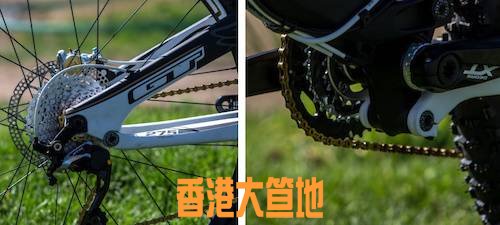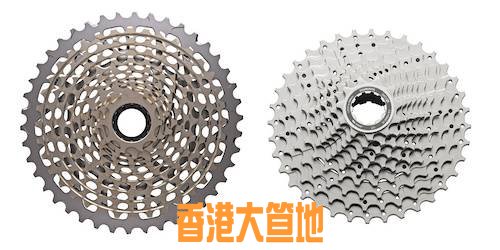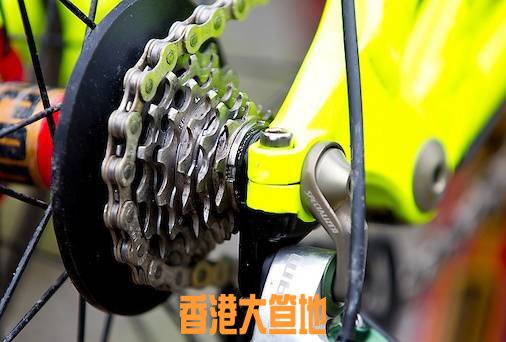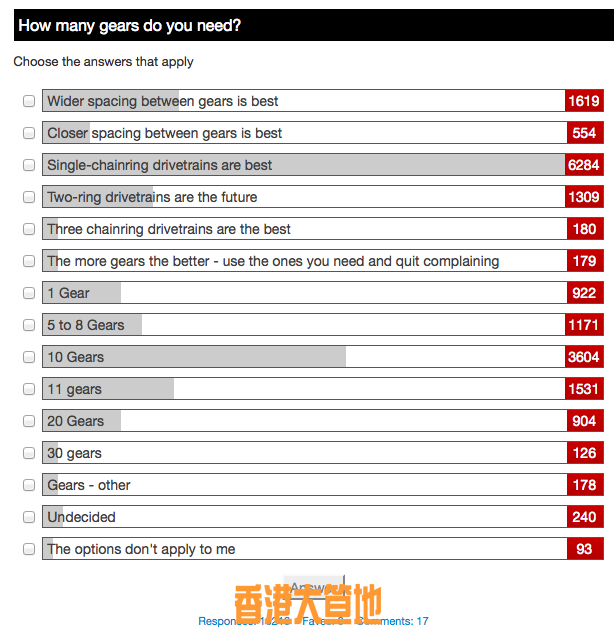|
|
登記成為會員,看更多精采內容!
您需要 登錄 才可以下載或查看,沒有賬號?登記成會員
×
現在 XC 單車界有三種前餅選擇 -- 單餅、雙餅、三餅。各有各 fans,亦有各有各嘅優點缺點,咁自己應該揀邊隻呢?
響 Pinkbike 網站刊登了一篇文章,解釋各種前餅,及分析最新 Specialized 發展嘅 6 速系統。(1x11 不是最新了)有興趣可睇睇。
(轉載自 Pinkbike 網站)
 Mountain bikers may not realize how many times we double or triple shift during the course of a ride because the terrain changes at a faster rate than our bicycle's gearing can handle with a single shift. Become conscious of your shifting and you may be surprised that almost every gear change is a double click. It is a phenomenon we have largely learned to live with, but it begs the questions: "Do we need such closely spaced gearing? And, do we really need 20, 30 or 33 gear ratios to get the job done?" Spend a month on a single speed and it seems absurd that the basic mountain bike transmission is so redundant.
Mountain bikers may not realize how many times we double or triple shift during the course of a ride because the terrain changes at a faster rate than our bicycle's gearing can handle with a single shift. Become conscious of your shifting and you may be surprised that almost every gear change is a double click. It is a phenomenon we have largely learned to live with, but it begs the questions: "Do we need such closely spaced gearing? And, do we really need 20, 30 or 33 gear ratios to get the job done?" Spend a month on a single speed and it seems absurd that the basic mountain bike transmission is so redundant.
Old-School Gearing
There is a consensus among old-school cyclists that a large number of closely-spaced gear ratios is the best possible solution for efficient power delivery. It seems that it is human nature for us to settle into a precise cadence and watt output, which leads us to believe that, if our bikes had just the right gear ratios, we could pedal happily onward with no regard to the gradient of the trail or the direction of the wind. In fact, the magic delta (rate of change) between gear shifts of a mountain bike cassette has been established at 13 percent.
Reportedly, Shimano has done extensive testing and has found that riders start to complain that the spacing between gears feels excessive as the cassette reaches a delta of 15 percent. Bang out the numbers on a calculator and Shimano's 11 x 36, ten-speed cassettes jump about 13-percent between shifts - except for the hop from the 13 to the 11-tooth cogs, which is closer to 15 percent. Don't blame Shimano for that big jump, however, because sprocket teeth are exactly one half inch apart, so it is not possible to design a cassette with perfectly spaced jumps between every gear option.

Just in Case You Wanted to Know
SRAM eleven speed: 10, 12, 14, 16, 18, 21, 24, 28, 32, 36, 42
SRAM ten speed: 11, 12, 14, 16, 18, 21, 24, 28, 32, 36
Shimano ten speed: 11, 13, 15, 17, 19, 21, 24, 28, 32, 36
Multiple Chainrings
The notion was largely decided, however, by road racers, who must match the the pace of their competitors' at all costs, or risk losing the draft and being relegated to distant back markers in a handful of seconds. The same may be said for cross-country racers, who must match subtle attacks on the climbing sections while maintaining their optimum cadence. The reason geared bikes have two or three chainrings is to allow a racer to pedal comfortably across the widest possible speed range. Because speeds of the average trail rider vary from a walking pace to 30 miles per hour (6.4 to 48 Kph), the multiple chairing option seems logical - simply choose the chaniring that best matches the situation and then flick the right-hand lever to fine tune the cassette cogs to match one's personal power output. Shimano strongly supports the multiple-chainring drivetrain for exactly those reasons.
The DH Option
 Racing often puts sharply focused demands upon all components. Downhillers adopted a close-ratio road cassette long ago to use a smaller, less-exposed rear derailleur and because the speed ranges of the pedaling sections on a typical DH course are more condensed and thus require narrower gearing. The close-ratio aspect of the road cassette, however is not optimal, and we are seeing more teams using custom, wider-ratio cassettes with as few as six cogs, presumably, to eliminate multiple shifting and to save time. Specialized was one of the pioneers. They began with a six-cog cassette based upon a Shimano Capreo system and it morphed into a seven-cog option for the Demo 8.
Racing often puts sharply focused demands upon all components. Downhillers adopted a close-ratio road cassette long ago to use a smaller, less-exposed rear derailleur and because the speed ranges of the pedaling sections on a typical DH course are more condensed and thus require narrower gearing. The close-ratio aspect of the road cassette, however is not optimal, and we are seeing more teams using custom, wider-ratio cassettes with as few as six cogs, presumably, to eliminate multiple shifting and to save time. Specialized was one of the pioneers. They began with a six-cog cassette based upon a Shimano Capreo system and it morphed into a seven-cog option for the Demo 8.
One-by for the Trail
For the average mountain bike rider, it seems wrong to have to pop off twenty or thirty shifts when ten would be fine. SRAM's XX1 seems to address the dedicated trail rider with a single chainring and only eleven, more widely spaced gear ratios. XX1 gear-shifts run closer to 15 percent (more or less), which soundly trounces the 13-percent rule. The beauty of SRAM's wider gear spacing is that in most trail riding situations, one click of the right-hand lever is all it takes to find the right gear. SRAM did not pioneer the wide-range one-by drivetrain. SRAM's contribution was the smaller, ten-tooth cog on the high end and the addition of an eleventh, 42-tooth low gear - an innovation that gave the one-by drivetrain a range that was darn close to conventional, multi-chainring transmissions. The fact that eleven options could improve on thirty aptly challenges the old-school theory
SRAM's one-by-eleven, however, does not completely solve the double and triple shifting issue. There are situations, like being faced with a steep climb around a blind corner, where a one-by transmission must be shifted five times to obtain a low enough gear to get over the top. In my experience, though, having fewer, more widely spaced gearing options, better matches the demands that the average trail puts on the legs. The more technical the terrain, the better the SRAM XX1 option seems to perform. Take it out on a paved highway and, like an off-road motorcycle, the XX1 bike reaches its top speed prematurely - and when pushing the wind or riding in a group, the wider-spaced shifts can feel awkward. In effect, SRAM's XX1 could be defined as the first dedicated trailbike drivetrain to come from a major player - and intended or not, a bike equipped with an XX1 drivetrain is a dedicated trailbike. If all you do is ride dirt, that can be a wonderful thing.
What is Optimum?
Outside of single-speed and freestyle riders, who can get along fine with one, how many gears are enough? Do trail riders need more options than a one-by-eleven? Can DH riders get along with six speeds? Is a three-by-eleven, 33-speed drivetrain in your future? How many gear options are optimal for dedicated mountain bike riders? You've heard our take, now we'd like to know what you think.
之後,有投票,顯示讀者的選擇:

|
|